6 Pelvic-Floor Exercises to Stop Urinary Leakage and Frequent Urination
Do you sometimes accidentally pee a little when you sneeze, laugh, or pass gas? It is estimated that 24 to 45 percent of women and 11 to 34 percent of older men worldwide suffer from a varying degree of urinary leakage, also known as urinary incontinence (UI).
Urinary leakage is often related to the over-relaxation of the pelvic floor muscles. Wu Mingchu, director of Wu Mingchu Traditional Chinese Medicine (TCM) Clinic in Taiwan, explained how to tighten loose muscles through acupoint massage and taking Chinese medicinal herbs. We will also cover six kinds of pelvic floor muscle exercises that can help address urinary leakage and frequent urination.
Reasons for Urinary Leakage

There is a muscle called the pelvic floor muscle that resides under the base of the pelvis. When the pelvic floor muscle becomes loose, it can result in urine leakage.
One nearly 90-year-old grandmother underwent bladder suspension surgery to resolve her urinary leakage problem caused by pelvic floor muscle weakness. Unexpectedly, however, the symptoms returned just a few months later.
Wu said that urinary leakage in older people is mainly caused by a decline in muscle stiffness or the weakness of the kidney and bladder system that manages the full excretion functionality. However, some middle-aged men and women also have problems with urinary leakage, which can be embarrassing.
The most common type of urinary incontinence is stress urinary incontinence, which happens when abdominal pressure increases. In this situation, the patient will unconsciously discharge urine due to the relaxation and frailty of the pelvic floor muscles or the structure supporting them. The second common type is urge urinary incontinence, the sudden urge to go to the bathroom. Most of these cases are due to an overactive bladder. Moreover, some suffer from both issues. Diseases may cause other instances of urinary incontinence.
In 2019, a survey conducted by the Taiwanese Continence Society found that as many as 50 percent of people aged 35 to 54 in Taiwan suffer from urinary leakage. And the problem is more severe in women than in men. This is mainly because women’s urethra is shorter than men’s. In addition, factors such as pregnancy, childbirth, menopause, and uterine surgery will also affect the firmness and contraction of women’s pelvic floor muscles.
Wu believes that since most women had multiple pregnancies in the past, that was the most significant factor in urinary leakage. However, nowadays, women give birth later or may choose never to give birth, so the causes of urinary leakage could now be:
- A sedentary lifestyle. Prolonged sitting can result in pelvic floor muscle weakness and poor water retention.
- Excessive weight loss by dieting, resulting in nutritional deficiencies and weak kidneys.
- Excessive stress and dysautonomia, resulting in frequent urination and urinary leakage.
If you have urinary leakage, regardless of whether you choose to address it with surgery, it is necessary to replenish the kidneys for a better therapeutic effect.
TCM Ways to Treat Urinary Leakage
TCM believes that the kidney and the bladder are “companions.” This means the two will influence each other for the good and the bad. Like a faucet, the kidneys govern opening and closing, and the bladder governs storage and drainage.
“Water” will drip if kidney energy is weak and the faucet is not turned off tight enough. If not addressed, this will lead to early menopause, hair loss, gray hair, and soreness in the waist and knees. Women may also experience irregular menstruation and other complications.
Wu said TCM boosts kidney qi (vital energy) to reduce urinary leakage. When kidney energy is found to be deficient, doctors usually start with Chinese medicinal formulas such as Ji Sheng Shen Qi Wan (Cyathula and Plantago pill), Jin Kui Shen Qi Wan (kidney qi pill), and Qing Xin Lian Zi Yin (lotus seed combination), and then gradually adjust the prescriptions according to the patient’s constitutions.
One study found that when patients with nocturia took Ji Sheng Shen Qi pills for 12 consecutive weeks, their nocturia and frequent urination problems improved. Animal experiments have also found that giving rats Ji Sheng Shen Qi pills prolongs the interval of bladder contraction. Ji Sheng Shen Qi pills can also inhibit bladder activity by balancing the sympathetic and parasympathetic nerves.
It is also possible to maintain health through acupuncture or massage-related acupoints. TCM believes that the human body’s energy flows through the internal organs and the skin’s surface along the meridians. There are also specific locations along the meridians called acupoints. Stimulating the acupoints with acupuncture and moxibustion (burning of moxa on the body’s surface) can regulate the energy of the internal organs and treat corresponding diseases.
Patients can usually press specific acupoints that strengthen kidney qi, such as Guanyuan (RN4), Qihai (RN6), Taixi (KI3), and Sanyinjiao (SP6). However, acupoint massaging is not adequate for patients with urinary incontinence caused by urinary tract infections.
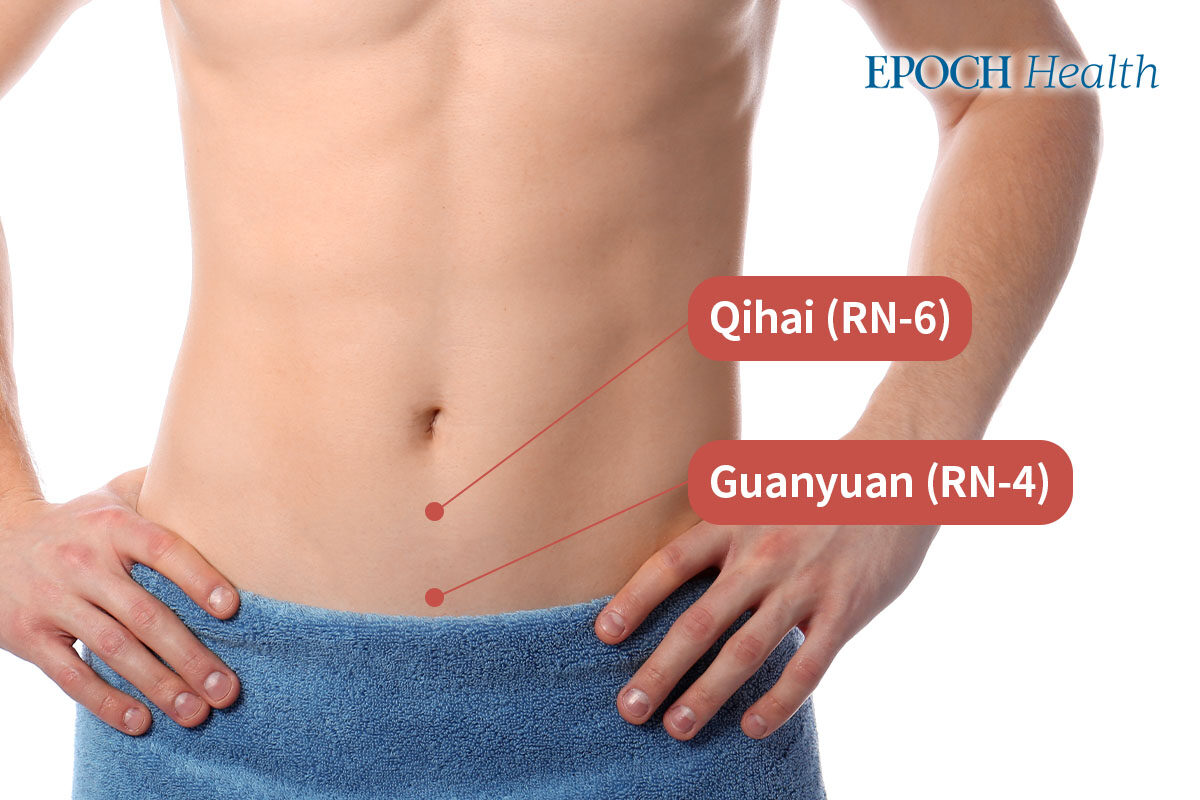
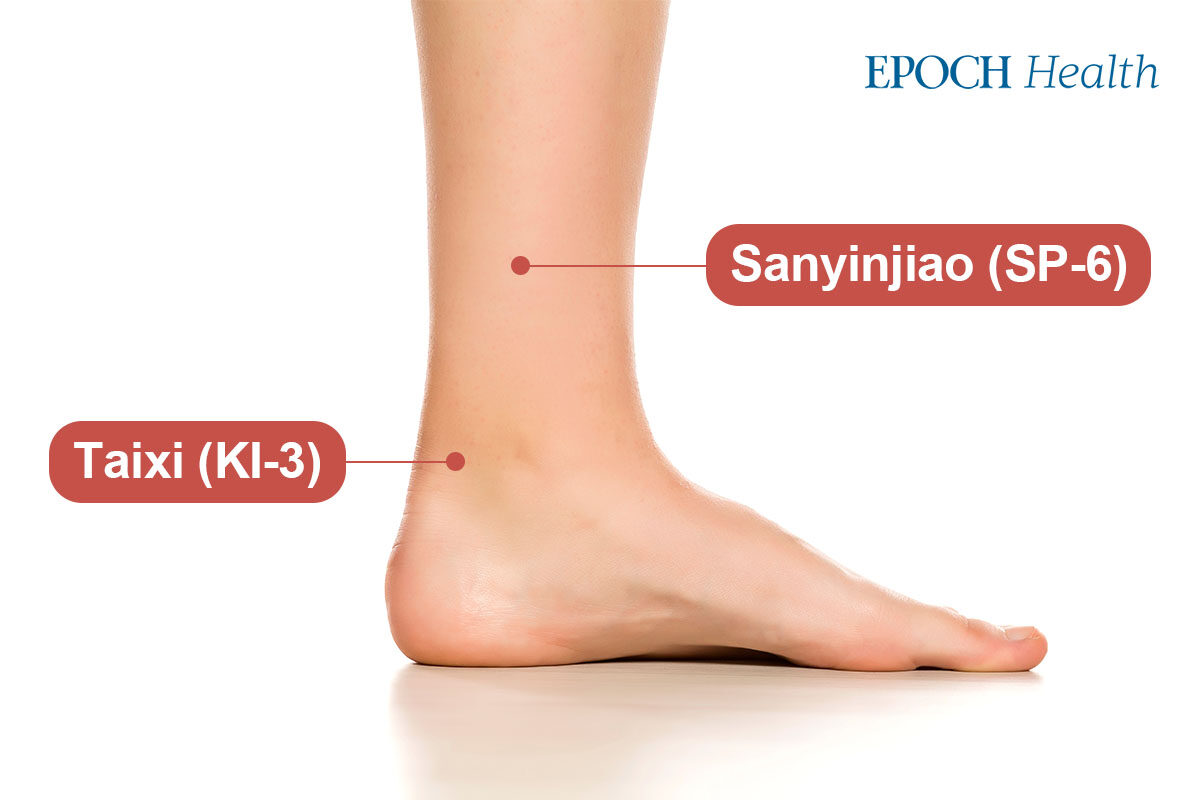

Regarding dietary therapy, TCM believes that “the color black enters the kidneys,” which means that black foods, such as black beans, black sesame, and Silkie chickens, can replenish kidney energy.
Wu also said to avoid carrying heavy objects for a prolonged period and not eat cold food before bed. In addition, you can do exercises, such as the Kegel exercise (repeated contracting and relaxing of pelvic floor muscles), to train your pelvic floor muscles. Doing these at least 100 times daily can effectively tighten the muscles and resolve urinary incontinence.
Ways to Train the Pelvic Floor Muscles
Where exactly are the pelvic floor muscles? The combination of our abdominal and pelvic cavity is a barrel-shaped structure with the diaphragm on top, the spine and multifidus at the back, the transverse abdominis on the front of the abdomen, and pelvic floor muscles on the bottom. Working the pelvic floor muscles utilizes the muscles that interrupt urine or stop bowel movements.
When you perform this exercise, the pelvic floor muscle will exert force, and the entire abdominal core will also. When you take deep breaths, the diaphragm descends, and the pressure of the abdominal cavity acts on the pelvic floor muscles. This movement also works the pelvic floor muscles.
Therefore, the most straightforward abdominal breathing exercises to heavy training, such as squats, deadlifts, farmer’s walks (weight-bearing walks), dead bugs, bird-dog poses, or core exercises, will all strengthen our pelvic floor muscles. It’s best to perform hip bridges while exercising the pelvic floor muscles.
6 Kegel Exercises
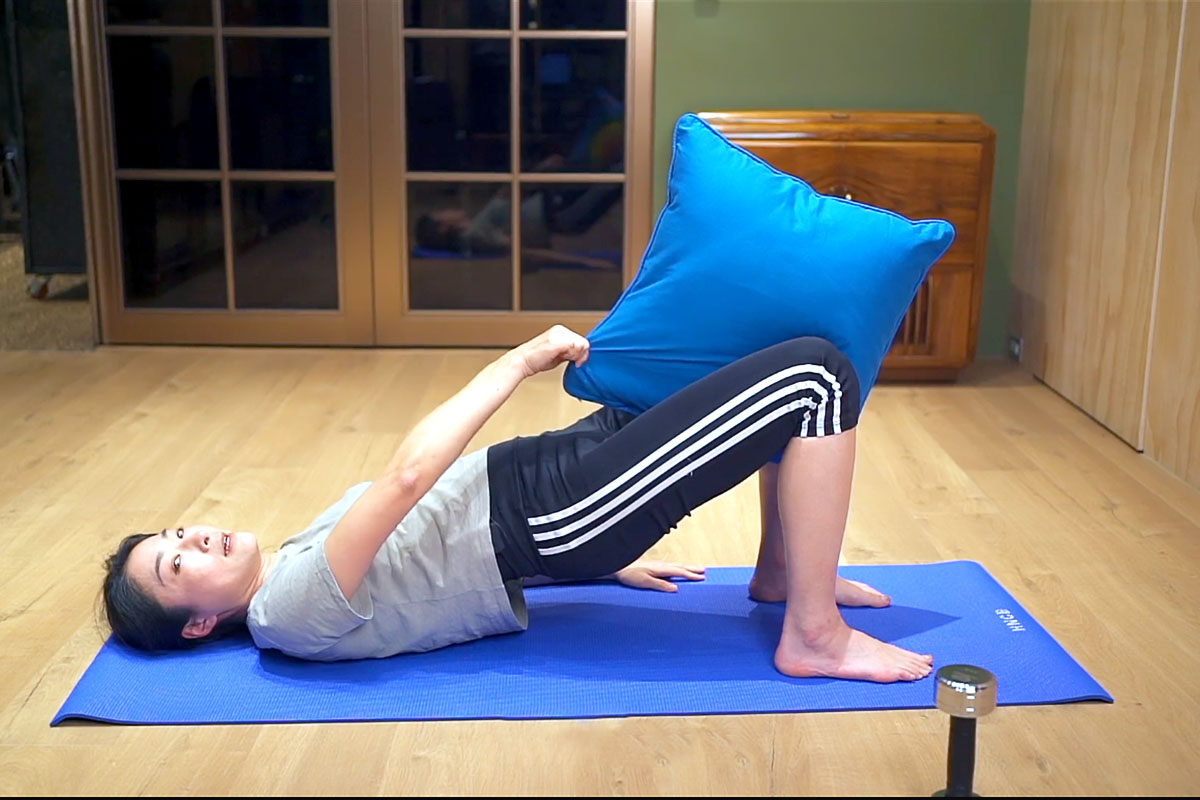
1. Basic Hip Bridge
Get a mat and yoga block. The mat cannot be too soft and should have a certain thickness.
- Lie on your back with your feet on the ground.
- Hold the yoga block between your knees, using a bit of force so it cannot be pulled away easily.
- Inhale and raise your hips, then come down on your exhale.
- Repeat 20 times, one to three sessions a day.
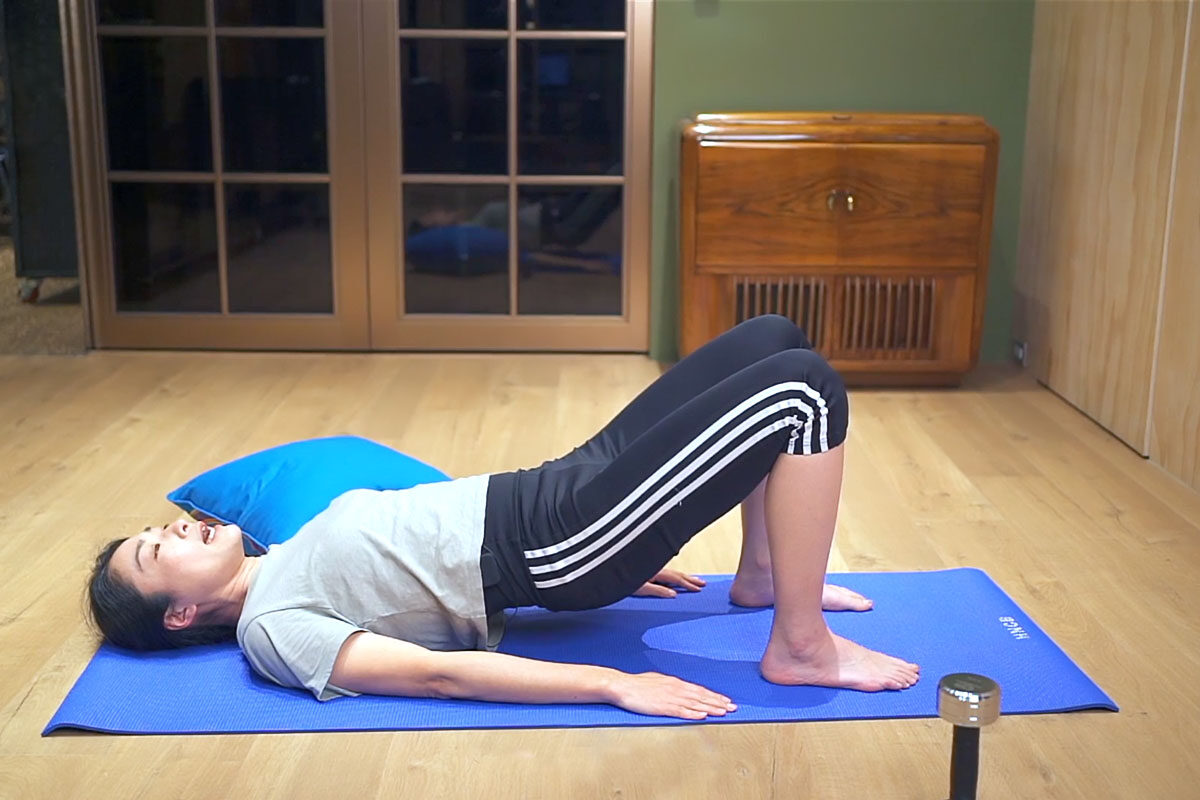
2. “1+1/2” Hip Push
- Start with the basic hip bridge.
- Inhale and raise your hips, then exhale and go down halfway without touching the ground.
- Inhale and raise your hips, then come down on your exhale.
- Repeat 20 times.

3. Basic Hip Bridge With Pause
- Start with the basic hip bridge.
- Inhale and raise your hips, hold at the highest point for 40 seconds, and exhale to come down.
- Repeat 20 times.
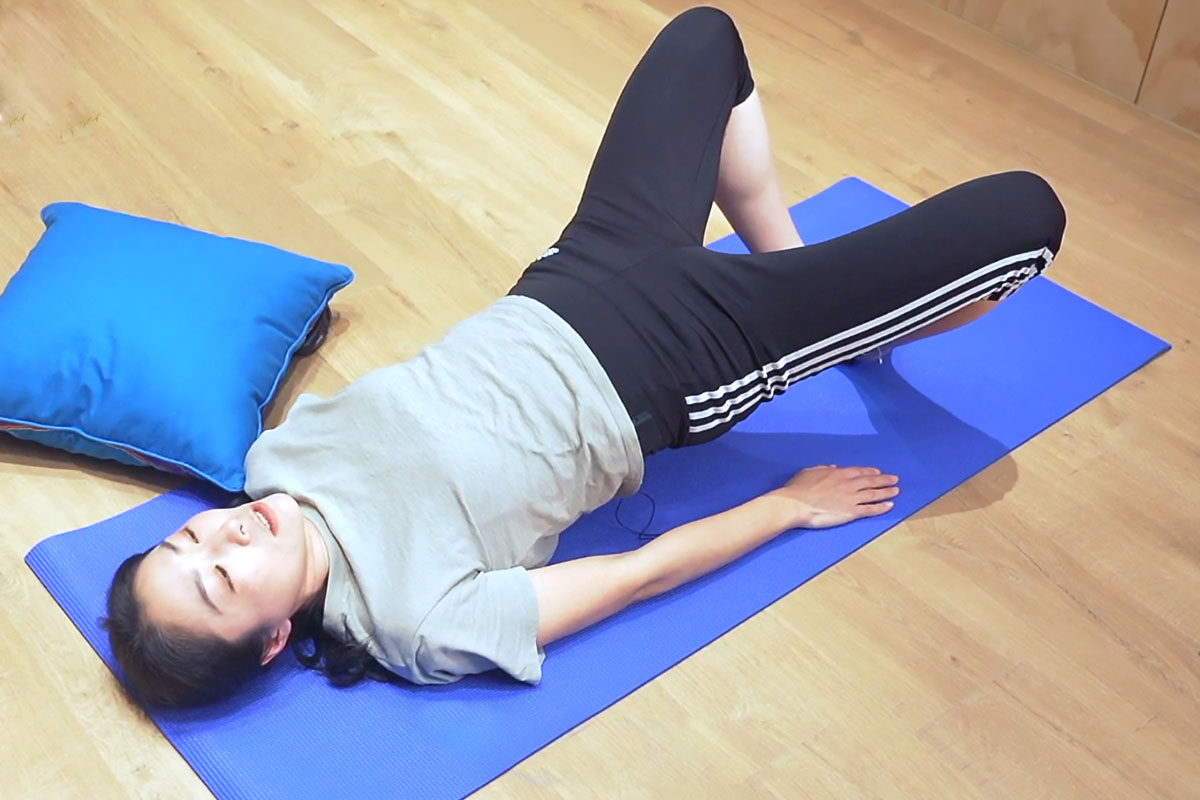
4. Hip Bridge With Soles Together
- Lie on your back with the soles of your feet together.
- Inhale and raise your hips, then come down on your exhale.
- Repeat 20 times.

5. Single-Leg Hip Bridge
- Start with the basic hip bridge and raise one foot.
- Inhale and raise your hips, then come down on your exhale.
- Repeat 20 times.
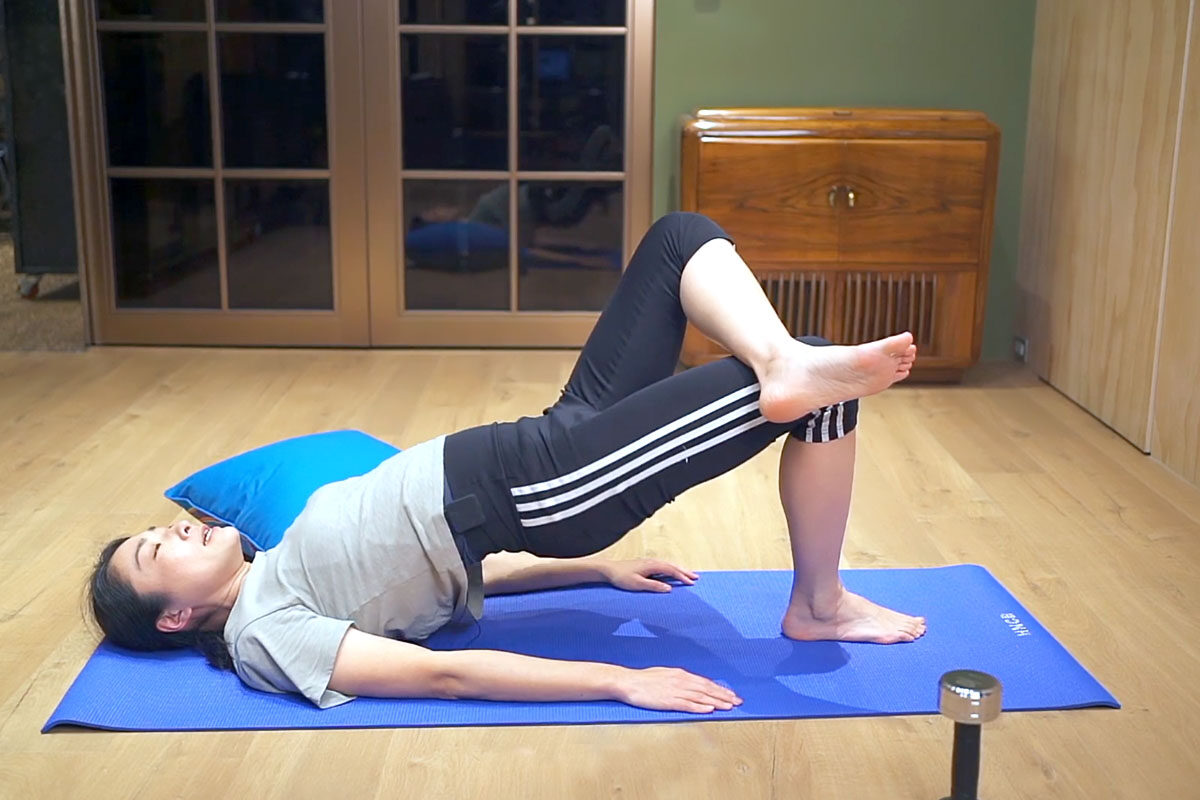
6. Single-Leg Hip Bridge Variation
- Place one ankle on the other thigh.
- Move the grounded foot closer to the middle of the mat to maintain balance.
- Inhale and raise your hips, then come down on your exhale.
- Repeat 20 times.
You should do pelvic floor muscle exercises one to three times a day. Choose one of the above six types each time. Be careful not to overcompensate with your abdominal muscles.
*Some herbs mentioned in this article may be unfamiliar, but they are generally available in Asian supermarkets.
Note: Because different people have different constitutions, consulting your doctor or TCM experts is recommended.




